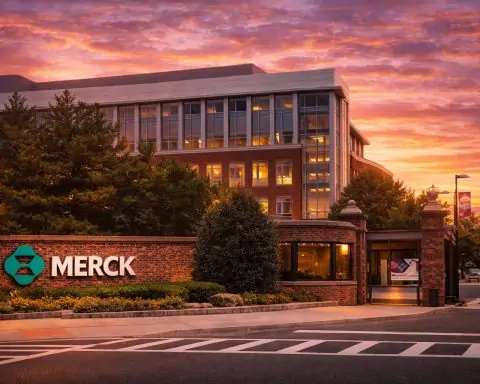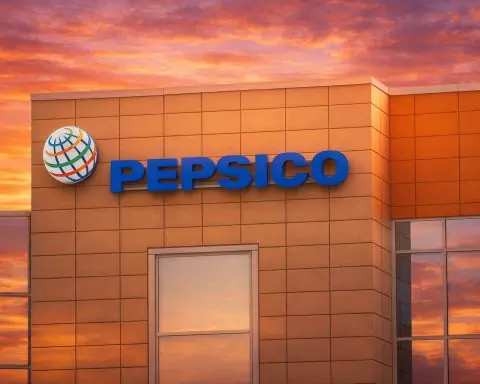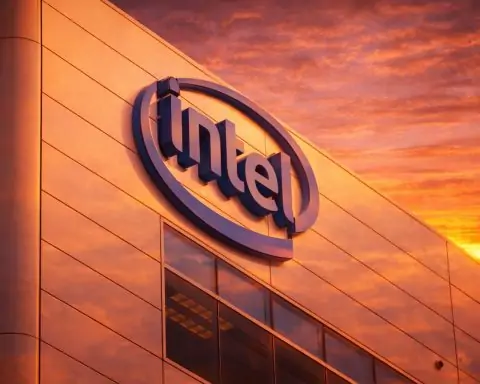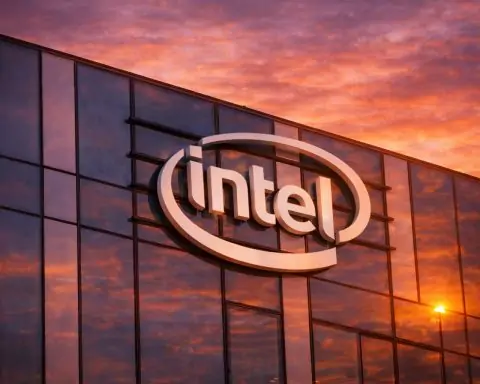- U.S. Takes 10% Stake in Trilogy Metals: In a rare move, the federal government is investing $35.6 million for roughly a 10% equity stake in Trilogy Metals, a Canadian company developing copper and other mineral projects in northwest Alaska [1] [2]. The agreement includes warrants that could boost the U.S. stake to 17.5% in the future [3].
- Ambler Road Project Revived: President Donald Trump signed an order on Oct. 6 reversing a Biden-era rejection of the Ambler Road – a proposed 211-mile industrial access road through remote Alaskan wilderness [4] [5]. The gravel road would connect the state’s Dalton Highway to the Ambler Mining District, unlocking a trove of copper, cobalt, zinc, gallium, germanium and other “critical minerals” in the region [6] [7].
- Strategic Rationale – “Critical Minerals” & China: Officials cast the investment and road as vital to U.S. national security and high-tech industry. Interior Secretary Doug Burgum said opening Ambler’s mines will secure supplies of copper and cobalt “that we need to win the AI arms race against China” [8]. The White House has labeled minerals like copper, cobalt, lithium and rare earths as strategic resources, crucial for clean energy, batteries and defense [9]. Trilogy’s CEO called the U.S. investment a “significant milestone” toward a secure domestic supply of critical minerals [10].
- Supporters Hail Jobs & Energy Benefits: Alaska’s leaders and mining advocates applaud the moves. The state’s congressional delegation argues the road is needed to reach a huge copper deposit valued over $7 billion [11]. They tout potential economic benefits, from thousands of construction jobs to over $1 billion in state revenues, while reducing reliance on foreign metals. “This partnership [with the U.S.] represents a strong vote of confidence in the Ambler Mining District” and a step toward domestic mineral independence, said Kaleb Froehlich, managing director of Ambler Metals (Trilogy’s joint venture) [12].
- Tribal and Environmental Opposition: Local Alaska Native communities and environmental groups condemn the decision. The Ambler Road would cut through wild caribou and salmon habitat – “pristine landscapes that support tribes and wildlife,” warned the Sierra Club [13]. A coalition of 40 tribes has long fought the project, fearing it will put subsistence hunting and fishing at risk [14]. “Communities along the proposed route have consistently opposed this damaging project… This order ignores those voices in favor of corporate polluters,” said Athan Manuel of the Sierra Club [15]. Alaska Native advocates vowed to launch new lawsuits to halt the road [16].
- Shares Soar on News:Trilogy Metals’ stock skyrocketed after word of the U.S. stake. The thinly-traded stock more than doubled in value in after-hours trading, jumping to around $4.72 from about $2 [17]. Investors saw the government’s backing as a game-changer for the once-struggling exploration firm. (Trilogy, based in Vancouver, had only 5 full-time employees in 2024 [18] and no revenue yet, reflecting its early-stage status.)
- Part of a New U.S. Strategy: This marks the latest in a series of direct government investments aimed at critical industries. Just last week, the Energy Department took a 5% equity stake in Lithium Americas to secure supply from a massive Nevada lithium project [19]. Earlier this year, the administration even acquired a 10% stake in Intel, the semiconductor maker, as a national security investment [20]. The Trump administration is pivoting from traditional subsidies toward buying stakes in companies to bolster domestic supply chains in minerals and tech [21].
U.S. Stakes a Claim in Alaska’s Mineral Riches
In an unprecedented step for U.S. industrial policy, the federal government announced it will become a shareholder in a private mining company to advance a domestic source of critical minerals. Interior Secretary Doug Burgum revealed that the U.S. government is acquiring about 10% of Trilogy Metals Inc., a small Canadian firm, to help fund its mining projects in Alaska’s remote Ambler Mining District [22]. The deal – a $35.6 million investment – is meant to jump-start exploration of rich copper and cobalt deposits on U.S. soil. “The Department [of] War, the United States government, is making an investment… so we can make sure that we’re securing these critical mineral supplies,” Burgum said at a White House event, emphasizing that an ownership stake will benefit Americans [23].
President Donald Trump also signed an executive order greenlighting the long-stalled Ambler Access Project – a 211-mile road through northwestern Alaska that is essential for Trilogy’s mining plans [24]. The Ambler road, first approved in Trump’s initial term but later blocked by the Biden administration, would finally give year-round ground access to the mineral-rich Ambler district, which is currently reachable only by air or seasonal ice roads. “It’s an economic gold mine, so to speak,” Trump quipped, lamenting that the project “should’ve been long operating and making billions of dollars for our country” had it not been stalled [25]. By overturning Biden’s 2024 cancellation of the road permit, Trump removed a major hurdle that had prevented development of what geologists call one of the world’s largest undeveloped copper-zinc mineral belts [26].
Under the new plan, Ambler Metals LLC – a joint venture between Trilogy Metals and Australia’s South32 Ltd. – will receive the infusion of federal funds to advance work on its mining prospects [27]. Trilogy’s CEO Tony Giardini hailed the U.S. investment as “a significant milestone” that “underscores the strategic importance” of the Ambler deposits for America’s energy technology and national security needs [28]. The Upper Kobuk Mineral Projects (UKMP) controlled by Ambler Metals contain high-grade copper, cobalt, zinc, gold, silver and other metals deemed critical for clean energy and defense applications. By taking a minority stake, Washington aims to share in the project’s upside and secure offtake rights, rather than leaving this supply to foreign control [29].
Government officials indicated the partnership is being carried out under special Defense Production Act authorities for strategic materials [30]. The U.S. stake comes with options to expand ownership: warrants would allow the government to acquire an additional 7.5% of Trilogy down the line, pending milestones like completion of the Ambler Road [31]. The investment still requires certain regulatory approvals and foreign ownership reviews, but it signals a dramatic policy shift toward direct government involvement in mining ventures [32].
Ambler Road: Development vs. Wilderness
At the heart of this story is the Ambler Road, a proposed private gravel highway that has ignited debate for years in Alaska. The road would stretch over 200 miles across tundra, rivers, and mountain passes, cutting through federal public lands – including a portion of the Gates of the Arctic National Park and Preserve – to reach the Ambler Mining District [33] [34]. Proponents say this infrastructure is absolutely vital for mineral development, likening it to a lifeline for otherwise stranded resources. The road would connect the isolated region to Alaska’s pipeline road (Dalton Highway) and onward to ports and markets, enabling trucks to haul ore and supplies.
The Ambler Road was initially approved late in Trump’s first term (circa 2020), but after President Joe Biden took office, federal agencies revisited the project’s environmental impact. In 2022, the Department of the Interior suspended the road’s permits pending further review, and by early 2024 the Biden administration formally rejected the project, with the Bureau of Land Management concluding that “no route” was the environmentally preferred alternative [35] [36]. The rejection cited “a litany of negative impacts”: threats to migrating caribou herds, pollution of salmon-bearing rivers, and disruption of Alaska Native communities that depend on intact ecosystems for subsistence hunting and fishing [37] [38].
Trump’s new order overrides that decision, invoking a seldom-used authority under a 1980 law (ANILCA) that allows the President to veto land-use decisions on Alaska projects [39] [40]. The White House directed federal agencies (the Army Corps of Engineers, BLM, and National Park Service) to reissue permits and treat the road as “in the public interest” despite prior findings [41]. Burgum, as Interior Secretary, stood in front of a map of Alaska at the press announcement and declared, “This opens up a wealth of resources,” referring to the mineral riches the road will access [42]. He noted the federal government’s stake in Trilogy Metals as evidence that Washington is literally invested in the region’s success [43].
Supporters of Ambler Road include Alaska’s state government and its entire congressional delegation (Republicans and even some Democrats), who have long argued that developing the state’s resources will create jobs and revenue for locals. The road is being championed by the Alaska Industrial Development and Export Authority (AIDEA) – the state’s investment arm – which estimates the mining district could yield billions of dollars in copper and other metals. According to AIDEA and the project backers, building the road and mines could generate 2,700+ construction jobs and over $1 billion in new revenues for Alaska through taxes and royalties [44] [45]. They also point out that high-grade copper from Ambler could support the manufacturing of electric vehicles, renewable energy systems, and military technology here in the United States [46] [47]. “We’ve got to get back in the mining business,” said Burgum, stressing that domestic sourcing of these minerals is necessary if Americans want both economic growth and supply chain security [48] [49].
Opponents, however, call Ambler Road a grave threat to one of North America’s last great wilderness areas. The route would pass near or through lands used by dozens of Alaska Native villages – areas that are habitat for the Western Arctic caribou herd, a key subsistence resource, as well as fish, bears and other wildlife [50] [51]. A consortium of over 40 federally recognized tribes and tribal organizations has steadfastly opposed the project [52]. They fear increased human access and industrial activity will disrupt animal migration patterns, introduce pollution into rivers, and ultimately undermine Indigenous traditions that have sustained communities for generations. “This private mining road would threaten millions of wild acres in the Arctic,” said Cooper Freeman of the Center for Biological Diversity, calling the approval “a slap in the face to everyone who’s spoken out about its harms” [53]. The Tanana Chiefs Conference, representing 39 Interior Alaska villages, blasted Trump’s decision as “a direct affront to the voices of Alaska Native people”, vowing to continue fighting in court [54].
Even one of the region’s major Native corporations, NANA Regional Corp. – which owns land along the proposed road – has expressed deep misgivings. NANA had initially been involved in planning but withdrew support in 2024, citing poor consultation and concern for cultural impacts [55] [56]. Following Trump’s new order, NANA’s CEO thanked officials for supporting development but pointedly noted the corporation’s stance “has not changed” and would be reconsidered only if its community-driven criteria are met [57] [58]. In short, significant local opposition remains, and multiple lawsuits by environmental and tribal groups are expected to challenge the revived road permit in the coming months [59] [60].
Critical Minerals and a New Strategy of Direct Investment
The Ambler initiative comes amid a broader push to secure “critical minerals” – resources like lithium, copper, cobalt, nickel, and rare earth elements that are essential for advanced batteries, electric cars, semiconductors, and clean energy infrastructure. U.S. policymakers have grown increasingly concerned that the nation’s reliance on imports (often from geopolitical rivals or unstable regions) for these raw materials poses a strategic vulnerability [61]. Copper in particular is in focus: analysts warn of a looming global copper supply crunch by the 2030s as demand for electrification soars. Annual copper demand could reach 33 million tonnes by 2035, far outstripping projected supply, according to industry forecasts [62]. Ensuring a domestic source of copper – the “metal of electrification” used in everything from power grids to EV motors – has thus become a national priority.
What’s novel is how the U.S. government is trying to meet this priority. Rather than solely easing regulations or offering tax incentives, the Trump administration has started directly investing in companies to steer critical projects. “This partnership… is a major step forward for domestic mineral development that’s fundamental to America’s security and economy,” said Ambler Metals’ Kaleb Froehlich of the federal stake [63]. The idea is that by having “skin in the game,” the government can accelerate projects that the private market found too risky or capital-intensive, and secure rights to the materials produced.
The Trilogy Metals investment follows a template seen in other sectors this year. In late September, Energy Secretary Chris Wright announced the U.S. will take a 5% ownership stake in Lithium Americas, a mining firm developing the gigantic Thacker Pass lithium deposit in Nevada [64]. Lithium is a key ingredient in EV batteries, and that deal (through the Department of Energy) was framed as ensuring America’s access to one of the world’s largest known lithium reserves [65]. Earlier in 2025, the administration shocked observers by taking a 10% stake in Intel Corporation, the iconic U.S. semiconductor manufacturer, as part of an effort to boost domestic chip production and outcompete China [66]. While the U.S. government has intervened in companies in the past during crises (for example, bailouts of automakers or banks), actively buying equity in healthy firms to advance industrial policy marks a significant shift.
A recent White House Fact Sheet on critical minerals noted that reliance on foreign supply chains – particularly China, which dominates processing of rare earths and battery metals – is untenable for the U.S. long-term [67]. Beijing’s export restrictions on materials like gallium and germanium (both listed among Ambler’s potential outputs) have underscored the geopolitical stakes. Trump officials argue that domestic mines like Ambler will reduce vulnerability and also undercut China’s leverage in the race for next-gen technologies. Burgum explicitly tied the Ambler project to global competition, saying the copper and cobalt will help America “win the AI arms race against China” by securing inputs for electronics and defense systems [68].
However, the direct-investment approach is not without controversy. Critics ask whether the federal government is picking winners and losers, and worry about the precedent of government ownership in private enterprises. There are also financial risks – taxpayers could lose money if a venture fails. Trilogy Metals, for instance, has never turned a profit; it remains a speculative exploration-stage company that will require extensive permitting, construction of the road and mines, and years of development before any copper is produced. Its stock price was languishing under $1 as recently as early 2025 [69]. The news of U.S. backing sent Trilogy’s share price soaring over 100% in one day [70], reflecting newfound investor optimism – but also speculation that the company’s fortunes now hinge on political winds in Washington.
Reactions and Next Steps
The federal stake and road approval have drawn cheers from industry and Alaska officials, and outcry from environmental and Native groups, setting the stage for a protracted battle. At the Oval Office signing ceremony, President Trump celebrated the move as correcting a mistake: “[Biden] undid it and wasted a lot of time… Now we’re starting again. And this time we have plenty of time to get it done,” he said, flanked by Burgum and Alaska lawmakers [71]. Alaska’s Governor and congressional representatives lauded the decision. Republican Governor Mike Dunleavy called it “a win for working families”, and Congressman Nick Begich III said it was “a historic day for Alaska’s self-determination” and would put the state “back on track” to develop its strategic minerals [72] [73]. Pro-development groups note that the Ambler district’s riches—often described as a “$7 billion” copper prize—have sat untapped for decades due to lack of access [74]. They argue the U.S. cannot afford to leave such resources in the ground when clean-energy industries are hungry for them.
On the other side, environmental coalitions and many Alaska Native leaders are mobilizing to fight what they view as a shortsighted giveaway. Protect the Kobuk, an Inupiat-led grassroots group named after the region’s Kobuk River, expressed feelings of betrayal and resolve. “I cried when I first learned of Trump’s actions… Then I reminded myself of who we are and how far we’ve come,” said Karmen Monigold, an Inupiaq member of the group, adding that her people have endured and will continue to resist harmful projects [75]. The Sierra Club and Earthjustice are preparing legal challenges, arguing that fast-tracking the Ambler road violates environmental laws and ignores required consultation with tribes. “This order ignores those voices in favor of corporate polluters,” the Sierra Club’s lands program director Athan Manuel said of Trump’s directive [76]. Lawsuits that were previously filed against the 2020-era Ambler Road permits had been put on hold after Biden’s cancellation; now plaintiffs are expected to revive those cases, potentially seeking injunctions to stop any construction activity [77].
What happens next? In the near term, the U.S. government’s investment still needs to be finalized. Trilogy Metals said it signed a binding letter of intent with the Department of Defense (often still referred to colloquially as the Department of War in this context) [78] [79]. The deal likely will close only after review under the Defense Production Act and CFIUS (Committee on Foreign Investment in the U.S.) since Trilogy is foreign-incorporated [80]. If approved, federal funds will flow into the Ambler joint venture’s exploration and permitting efforts. South32, Trilogy’s Australian partner, is expected to co-invest or match funds as part of the arrangement [81] [82], and the Ambler project will move into advanced study phases.
Construction of the Ambler Road, however, is not imminent. Even with Trump’s order, there are significant hurdles: the project must secure right-of-way agreements with two Native corporations (Doyon and NANA) whose lands lie in its path [83] [84], and overcome the coming legal injunction requests. If those challenges can be resolved, AIDEA would still need to finance and build the road – at an estimated cost of around $1 billion. The plan is for a private toll road model, similar to the one that services the Red Dog mine in northwest Alaska [85]. AIDEA has indicated tolls on mining companies using the road would repay the construction bonds over time [86]. Federal support and designation as a critical infrastructure project could help expedite permits and possibly unlock funding tools, but timelines remain uncertain.
In summary, the U.S. government’s decision to literally stake a claim in Alaska’s Ambler Mining District marks a bold bet on the nation’s mineral future. It intertwines a high-stakes resource play with questions of environmental stewardship and Indigenous rights. On one hand, it could pave the way for a domestic “critical minerals rush” – boosting U.S. supply of copper and cobalt in an era of global competition for these resources. On the other hand, it has escalated a fierce conflict over conservation of Arctic wilderness and respect for tribal sovereignty. As permitting and likely court battles unfold, the Ambler saga will test how far the U.S. is willing to go to secure the raw materials of the 21st-century economy – and at what cost to its natural heritage and local communities. The world will be watching to see if Alaska’s next big mining road truly becomes, as Trump hopes, “something that’s making billions for our country”, or if it remains mired in controversy on the tundra.
Sources:
- CNBC News – Trilogy Metals shares surge after U.S. takes stake in minerals firm (Oct. 7, 2025) [87] [88]
- The Guardian/Associated Press – Trump orders approval of 211-mile mining road through Alaska wilderness (Oct. 6, 2025) [89] [90] [91]
- Reuters – Trump orders permits for Alaska mining road, US takes stake in Trilogy Metals (Oct. 6, 2025) [92] [93]
- CBS News – Federal government to take ownership stake in Trilogy Metals… (Oct. 6, 2025) [94] [95]
- Tech Space 2.0 (TS2) – Trilogy Metals Stock Soars After U.S. Govt Deal – Critical Minerals Boom Brewing? [96] [97]
- Alaska Beacon – Trump approves appeal for Ambler Road project, reversing Biden’s rejection (Oct. 6, 2025) [98]
- Must Read Alaska – Trump Revives Ambler Road Project, Sparking Debate… (Oct. 6, 2025) [99] [100]
References
1. www.reuters.com, 2. www.cbsnews.com, 3. www.reuters.com, 4. www.theguardian.com, 5. www.reuters.com, 6. www.bloomberg.com, 7. mustreadalaska.com, 8. www.theguardian.com, 9. ts2.tech, 10. ts2.tech, 11. www.theguardian.com, 12. www.reuters.com, 13. www.reuters.com, 14. www.theguardian.com, 15. www.reuters.com, 16. www.theguardian.com, 17. www.reuters.com, 18. www.cbsnews.com, 19. www.theguardian.com, 20. www.cbsnews.com, 21. www.cbsnews.com, 22. www.reuters.com, 23. www.cbsnews.com, 24. www.reuters.com, 25. www.reuters.com, 26. mustreadalaska.com, 27. ts2.tech, 28. ts2.tech, 29. ts2.tech, 30. ts2.tech, 31. www.reuters.com, 32. ts2.tech, 33. www.theguardian.com, 34. www.theguardian.com, 35. alaskabeacon.com, 36. alaskabeacon.com, 37. www.reuters.com, 38. www.theguardian.com, 39. alaskabeacon.com, 40. alaskabeacon.com, 41. mustreadalaska.com, 42. alaskabeacon.com, 43. alaskabeacon.com, 44. mustreadalaska.com, 45. mustreadalaska.com, 46. www.theguardian.com, 47. www.theguardian.com, 48. www.theguardian.com, 49. www.theguardian.com, 50. www.theguardian.com, 51. www.theguardian.com, 52. www.theguardian.com, 53. mustreadalaska.com, 54. alaskabeacon.com, 55. mustreadalaska.com, 56. alaskabeacon.com, 57. alaskabeacon.com, 58. alaskabeacon.com, 59. www.theguardian.com, 60. alaskabeacon.com, 61. ts2.tech, 62. ts2.tech, 63. www.reuters.com, 64. www.theguardian.com, 65. www.theguardian.com, 66. www.cbsnews.com, 67. ts2.tech, 68. www.theguardian.com, 69. ts2.tech, 70. www.reuters.com, 71. www.theguardian.com, 72. mustreadalaska.com, 73. mustreadalaska.com, 74. www.theguardian.com, 75. www.theguardian.com, 76. www.reuters.com, 77. alaskabeacon.com, 78. ts2.tech, 79. ts2.tech, 80. ts2.tech, 81. ts2.tech, 82. ts2.tech, 83. alaskabeacon.com, 84. alaskabeacon.com, 85. alaskabeacon.com, 86. alaskabeacon.com, 87. www.reuters.com, 88. www.reuters.com, 89. www.theguardian.com, 90. www.theguardian.com, 91. www.theguardian.com, 92. www.reuters.com, 93. www.reuters.com, 94. www.cbsnews.com, 95. www.cbsnews.com, 96. ts2.tech, 97. ts2.tech, 98. alaskabeacon.com, 99. mustreadalaska.com, 100. mustreadalaska.com










